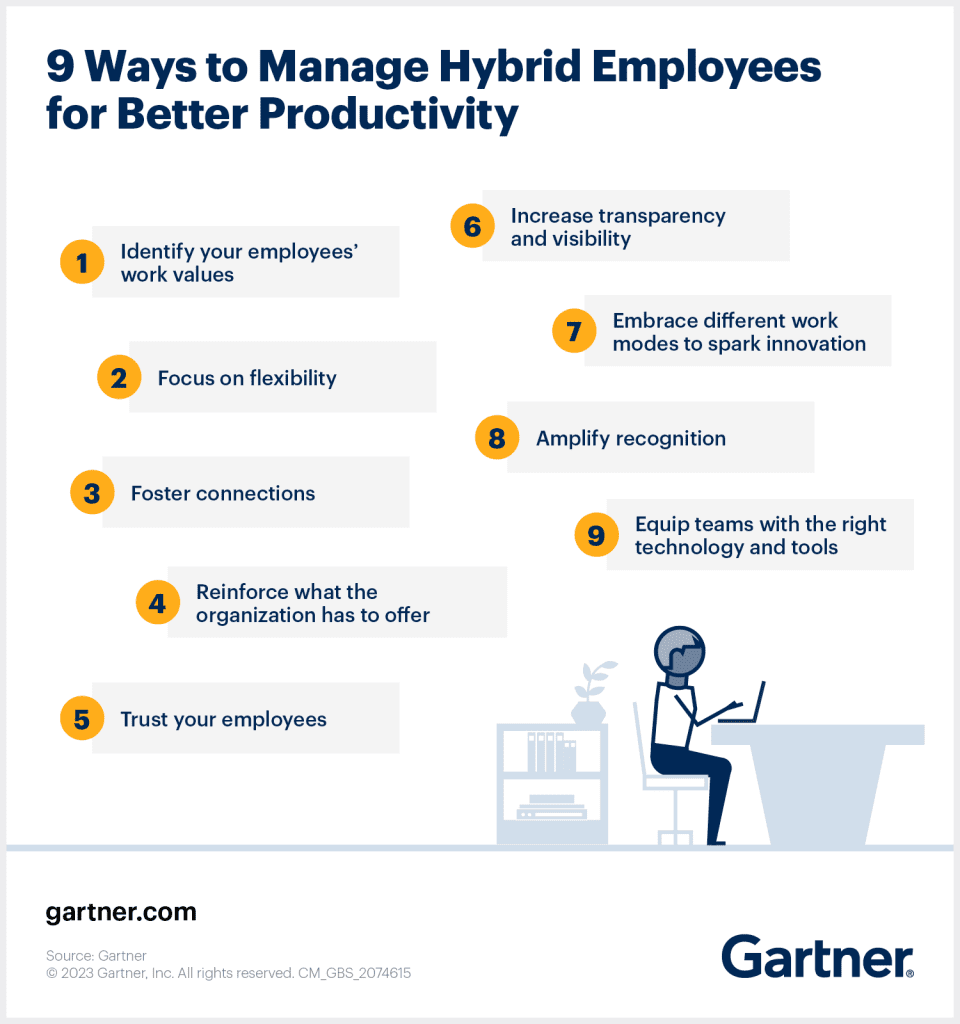Are you tired of spending countless hours sorting through stacks of resumes, only to find that most of the candidates aren’t the right fit for your company? If so, it’s time to consider implementing an application tracking system (ATS) into your recruitment strategy.
An ATS is a software solution that streamlines the hiring process, making it more efficient and effective. It automates various tasks such as resume screening, candidate sourcing, and interview scheduling, freeing up valuable time for HR professionals to focus on more strategic aspects of recruitment.
With an ATS, you can easily track and manage candidate profiles, analyze application data, and collaborate with your team in real-time. This not only saves time but also ensures a consistent and objective evaluation of each candidate, leading to better hiring decisions.
By incorporating an ATS into your recruitment strategy, you can transform your hiring process from chaos to efficiency. With improved candidate screening, streamlined workflows, and enhanced collaboration, you’ll be able to find and hire top talent faster than ever before. Say goodbye to outdated, time-consuming methods and embrace the power of technology to take your recruitment to the next level.
The challenges of traditional recruitment methods
Are you tired of spending countless hours sorting through stacks of resumes, only to find that most of the candidates aren’t the right fit for your company? If so, it’s time to consider implementing an application tracking system (ATS) into your recruitment strategy.
An ATS is a software solution that streamlines the hiring process, making it more efficient and effective. It automates various tasks such as resume screening, candidate sourcing, and interview scheduling, freeing up valuable time for HR professionals to focus on more strategic aspects of recruitment.
With an ATS, you can easily track and manage candidate profiles, analyze application data, and collaborate with your team in real-time. This not only saves time but also ensures a consistent and objective evaluation of each candidate, leading to better hiring decisions.
By incorporating an ATS into your recruitment strategy, you can transform your hiring process from chaos to efficiency. With improved candidate screening, streamlined workflows, and enhanced collaboration, you’ll be able to find and hire top talent faster than ever before. Say goodbye to outdated, time-consuming methods and embrace the power of technology to take your recruitment to the next level.
What is an application tracking system (ATS)?
Traditional recruitment methods can be time-consuming and inefficient. HR professionals often find themselves drowning in a sea of resumes, struggling to identify the most qualified candidates. This manual process not only wastes valuable time but also increases the risk of overlooking qualified candidates or making subjective hiring decisions.
Additionally, traditional methods make it difficult to track and analyze candidate data. Without a centralized system, important information can get lost or mismanaged, making it challenging to make data-driven hiring decisions. This lack of visibility can hinder the overall efficiency and effectiveness of the recruitment process.
Furthermore, collaboration among team members can be a challenge with traditional recruitment methods. Sharing resumes, scheduling interviews, and gathering feedback often involves numerous emails and phone calls, leading to miscommunication and delays. This lack of streamlined communication can slow down the hiring process and result in missed opportunities to secure top talent.
In summary, traditional recruitment methods are plagued with inefficiencies, including manual resume screening, unorganized candidate data, and poor collaboration. It’s clear that a change is needed to overcome these challenges and bring efficiency to the recruitment process.
Benefits of using an ATS for recruitment
An application tracking system (ATS) is a software solution designed to automate and streamline the recruitment process. It serves as a centralized platform that allows HR professionals to manage all aspects of the hiring process, from resume screening to candidate onboarding.
ATS systems typically include features such as resume parsing, candidate sourcing, interview scheduling, and analytics. These features eliminate the need for manual tasks, enabling HR professionals to focus their time and energy on strategic recruitment activities.
One of the key functions of an ATS is resume parsing. This feature automatically extracts relevant information from resumes, such as contact details, work experience, and education. By parsing resumes, ATS systems eliminate the need for manual data entry, saving time and reducing the risk of human error.
Candidate sourcing is another essential feature of an ATS. It allows HR professionals to search for candidates based on specific criteria, such as skills, experience, and location. This feature simplifies the process of finding qualified candidates, ensuring that you have a pool of suitable applicants to choose from.
ATS systems also facilitate interview scheduling by automating the process of coordinating availability between candidates and interviewers. This eliminates the back-and-forth communication typically involved in scheduling interviews, saving time and reducing the likelihood of scheduling conflicts.
In addition to these features, ATS systems provide analytics and reporting capabilities. They allow HR professionals to track and analyze recruitment data, such as the number of applicants, time-to-hire, and source of hire. These insights enable data-driven decision-making, helping you optimize your recruitment strategy for better results.
In summary, an ATS is a software solution that automates and streamlines the recruitment process. It offers features such as resume parsing, candidate sourcing, interview scheduling, and analytics, allowing HR professionals to save time, improve efficiency, and make data-driven hiring decisions.
Key features to look for in an ATS
Implementing an ATS into your recruitment strategy offers numerous benefits that can significantly improve your hiring process. Let’s explore some of the key advantages of using an ATS:
### 1. Time-saving Efficiency
One of the most significant benefits of using an ATS is the time-saving efficiency it brings to the recruitment process. With automated resume screening and parsing, HR professionals can quickly sift through a large volume of resumes, identifying the most qualified candidates in a fraction of the time it would take manually.
By eliminating manual tasks and streamlining workflows, an ATS enables HR professionals to focus on higher-value activities, such as interviewing and building relationships with candidates. This not only speeds up the hiring process but also ensures that candidates receive a positive and efficient experience throughout their application journey.
### 2. Improved Candidate Screening
An ATS improves candidate screening by providing a standardized and consistent evaluation process. With predefined criteria and automated resume parsing, HR professionals can objectively assess candidates based on their qualifications, skills, and experience. This eliminates subjective biases and ensures fair and equal treatment of all applicants.
Additionally, an ATS allows for keyword-based searches, enabling HR professionals to identify candidates with specific skills or qualifications. This targeted approach to candidate sourcing ensures that you find the most suitable candidates for your open positions, increasing the chances of making successful hires.
### 3. Enhanced Collaboration and Communication
Collaboration and communication among team members are essential for successful recruitment. An ATS facilitates collaboration by providing a centralized platform for sharing candidate information, scheduling interviews, and gathering feedback. This eliminates the need for lengthy email chains or phone calls, reducing miscommunication and delays.
Furthermore, an ATS enables real-time collaboration, allowing team members to view and update candidate profiles simultaneously. This enhances transparency and ensures that everyone involved in the hiring process has access to the most up-to-date information. With improved collaboration, your team can work together seamlessly, making informed hiring decisions more efficiently.
### 4. Data-driven Decision-making
Data is a powerful tool for optimizing recruitment strategies and making informed decisions. An ATS provides analytics and reporting capabilities that allow HR professionals to track and analyze recruitment data, such as the number of applicants, time-to-fill, and source of hire.
By leveraging these insights, you can identify patterns, trends, and areas for improvement in your recruitment process. For example, you may discover that certain sourcing channels yield higher-quality candidates, or that the time-to-hire is longer for certain positions. Armed with this information, you can make data-driven adjustments to your strategy, resulting in more effective and efficient hiring.
In summary, using an ATS for recruitment offers several benefits, including time-saving efficiency, improved candidate screening, enhanced collaboration and communication, and data-driven decision-making. These advantages enable HR professionals to streamline their workflows, make better hiring decisions, and ultimately, find and hire top talent faster.
Implementing an ATS into your recruitment strategy
When choosing an ATS for your recruitment needs, it’s important to consider the key features that will best support your hiring process. Here are some essential features to look for in an ATS:
### 1. Resume Parsing and Screening
An ATS should have robust resume parsing capabilities that can automatically extract relevant information from resumes, such as contact details, work experience, and education. This feature eliminates the need for manual data entry and speeds up the screening process.
Additionally, the ATS should provide customizable screening criteria that allow HR professionals to define specific qualifications and skills they’re looking for in candidates. This ensures that only the most suitable candidates progress to the next stage of the hiring process.
### 2. Candidate Sourcing and Tracking
An effective ATS should have candidate sourcing capabilities that allow HR professionals to search for candidates based on specific criteria, such as skills, experience, and location. This feature simplifies the process of finding qualified candidates and ensures that you have a diverse pool of applicants to choose from.
Furthermore, the ATS should provide a centralized platform for tracking and managing candidate profiles. This includes storing resumes, interview notes, and other relevant documents. Having all candidate information in one place improves organization and allows for easy access during the evaluation and decision-making stages.
### 3. Interview Scheduling and Collaboration
An ATS should automate the process of interview scheduling by allowing HR professionals to coordinate availability between candidates and interviewers. This eliminates the need for back-and-forth communication and reduces the likelihood of scheduling conflicts.
Additionally, the ATS should facilitate collaboration among team members by providing a platform for sharing candidate information, interview feedback, and notes. This enhances transparency and ensures that everyone involved in the hiring process has access to the same information, resulting in more informed and efficient decision-making.
### 4. Analytics and Reporting
An ATS should provide robust analytics and reporting capabilities that allow HR professionals to track and analyze recruitment data. This includes metrics such as the number of applicants, time-to-fill, source of hire, and diversity statistics.
The ATS should generate reports that provide actionable insights into the effectiveness of your recruitment strategies. For example, you may discover that certain sourcing channels are more successful in attracting qualified candidates, or that the time-to-hire is longer for specific positions. These insights enable data-driven decision-making and allow you to continuously optimize your recruitment process.
In summary, when choosing an ATS, look for features such as resume parsing and screening, candidate sourcing and tracking, interview scheduling and collaboration, and analytics and reporting. These features will help you streamline your recruitment process, improve candidate evaluation, and make data-driven hiring decisions.
How an ATS streamlines the application process
Implementing an ATS into your recruitment strategy requires careful planning and consideration. Here are the key steps to successfully integrate an ATS into your hiring process:
### 1. Assess Your Recruitment Needs
Before selecting an ATS, assess your recruitment needs and identify the pain points you want to address. Consider factors such as the volume of applicants, the complexity of your hiring process, and the level of collaboration required among team members.
Understanding your needs will help you choose an ATS that aligns with your specific requirements, ensuring a seamless integration into your recruitment strategy.
### 2. Research and Compare ATS Providers
Research and compare different ATS providers to find the one that best suits your needs. Consider factors such as cost, scalability, ease of use, customer support, and integration capabilities with other HR systems.
Read customer reviews, request demos, and ask for recommendations from other HR professionals to gather insights that will help you make an informed decision.
### 3. Plan for Implementation
Once you’ve selected an ATS provider, create a detailed implementation plan. Define key milestones, allocate resources, and establish a timeline for the integration process.
Consider involving stakeholders from different departments to ensure a smooth transition and to address any potential challenges or concerns.
### 4. Prepare and Import Data
Prepare your existing candidate data for import into the ATS. Cleanse and organize the data to ensure accuracy and consistency. This may involve mapping fields from your current system to the corresponding fields in the ATS.
Verify that the data has been imported correctly and conduct thorough testing to ensure that all functionalities are working as expected.
### 5. Train Your Team
Provide comprehensive training to your HR team on how to effectively use the ATS. Ensure that they are familiar with all the features and functionalities, and encourage them to explore and experiment with the system.
Offer ongoing support and resources to address any questions or concerns that may arise during the training and implementation process.
### 6. Monitor and Optimize
Once the ATS is up and running, monitor its performance and gather feedback from your team. Continuously evaluate the effectiveness of the system and identify areas for improvement.
Leverage the analytics and reporting capabilities of the ATS to track key recruitment metrics and make data-driven adjustments to your strategy.
In summary, implementing an ATS into your recruitment strategy requires assessing your needs, researching and comparing ATS providers, planning for implementation, preparing and importing data, training your team, and monitoring and optimizing the system. By following these steps, you can seamlessly integrate an ATS into your hiring process and reap the benefits of a more efficient and effective recruitment strategy.
Tracking and managing candidate data with an ATS
An ATS streamlines the application process by automating various tasks and providing a centralized platform for managing candidate information. Let’s explore how an ATS streamlines each stage of the application process:
### 1. Job Posting and Application
With an ATS, you can create and publish job postings across multiple platforms, such as your company website, job boards, and social media. This ensures maximum visibility and attracts a diverse pool of applicants.
Candidates can easily apply for positions through the ATS, either by uploading their resumes or filling out online application forms. The ATS automatically captures and stores this information, eliminating the need for manual data entry.
### 2. Resume Screening and Parsing
An ATS simplifies resume screening by automatically parsing resumes and extracting relevant information. This eliminates the need for manual review and speeds up the screening process.
HR professionals can set specific criteria and keywords to screen resumes, ensuring that only qualified candidates move forward in the hiring process. This targeted approach saves time and ensures that you focus on candidates who meet your specific requirements.
### 3. Candidate Evaluation and Collaboration
Once resumes have been screened, the ATS provides a centralized platform for evaluating and collaborating on candidate profiles. HR professionals can view resumes, cover letters, and other relevant documents, as well as add comments and share feedback.
This collaborative approach ensures that all team members have access to the same information, improving communication and reducing the risk of miscommunication. It also allows for a more objective evaluation of candidates, as feedback is recorded and accessible for reference.
### 4. Interview Scheduling and Communication
An ATS automates the process of interview scheduling by allowing HR professionals to coordinate availability between candidates and interviewers. This eliminates the need for manual back-and-forth communication and reduces the likelihood of scheduling conflicts.
The ATS also facilitates communication with candidates by sending automated email notifications and updates throughout the interview process. This keeps candidates informed and engaged, providing a positive candidate experience.
### 5. Candidate Selection and Onboarding
Once interviews are completed, the ATS helps HR professionals make informed candidate selection decisions. By storing interview feedback and evaluation scores, the ATS provides a comprehensive view of each candidate’s qualifications.
HR professionals can compare and contrast candidates, review interview notes, and collaborate with team members to make the best hiring decisions. This ensures that hiring decisions are based on objective data and consensus among the team.
Furthermore, the ATS can facilitate the onboarding process by providing a platform for storing and managing new hire documents, such as offer letters, contracts, and onboarding checklists. This ensures a smooth transition from candidate to employee.
In summary, an ATS streamlines the
Integrating an ATS with other HR systems
An application tracking system (ATS) provides a centralized platform for tracking and managing candidate data throughout the recruitment process. Gone are the days of manually sifting through piles of resumes and cover letters. With an ATS, you can easily create and maintain a database of candidate profiles, making it effortless to search and retrieve information whenever needed.
The ATS allows you to store all relevant applicant data in one place, including contact information, resumes, cover letters, and any other supporting documents. This eliminates the need for physical document storage and reduces the risk of misplacing important candidate information. Additionally, the ATS enables you to add notes and comments to each candidate’s profile, making it easier for you and your team to collaborate and share feedback.
Another advantage of an ATS is its ability to automate resume screening. Instead of manually reviewing each application, the ATS uses algorithms to scan resumes for keywords and qualifications that match the job requirements. This helps you quickly identify the most qualified candidates and prioritize them for further evaluation. By automating this process, an ATS saves you a significant amount of time and ensures that no eligible candidate slips through the cracks.
Integrating an ATS with Other HR Systems
To maximize the efficiency of your recruitment strategy, it’s important to integrate your ATS with other HR systems. Integration allows for seamless data transfer between different platforms, eliminating the need for manual data entry and reducing the risk of errors.
One common integration is between the ATS and the company’s career website. By integrating the two, candidates can easily submit their applications directly through the website, and their information is automatically captured and stored in the ATS. This simplifies the application process for candidates and ensures that their data is accurately recorded in your system.
Integration with your email system is another valuable feature. With this integration, you can automatically import candidate emails into the ATS, ensuring that all communication is centralized and easily accessible. This saves you the time and effort of manually forwarding emails or copying and pasting information into the system.
Furthermore, integrating your ATS with your HRIS (Human Resources Information System) can provide even more benefits. This integration allows for seamless transfer of candidate data between the HRIS and ATS, ensuring that all employee information is up to date and accurate. It also enables you to streamline onboarding processes by automatically creating employee profiles in the HRIS once a candidate is hired.
Best Practices for Maximizing the Efficiency of Your ATS
While an ATS can significantly improve your recruitment strategy, it’s important to ensure that you are using it to its full potential. Here are some best practices for maximizing the efficiency of your ATS:
1. Customize your ATS: Tailor your ATS to match your specific recruitment needs. Set up custom fields, tags, and workflows that align with your hiring process. This will help you effectively track and organize candidate data.
2. Train your team: Provide comprehensive training to your HR team on how to use the ATS effectively. This will ensure that everyone is using the system consistently and taking full advantage of its features.
3. Optimize your job postings: Use keywords and phrases in your job descriptions that will help your ATS accurately match candidates to the right positions. This will improve the quality of your applicant pool and save you time in the screening process.
4. Regularly update your ATS: Keep your ATS up to date with the latest software version and regularly review and update your candidate data. This will ensure that your system is running smoothly and that you have the most accurate and relevant information.
5. Analyze and refine: Take advantage of the analytics and reporting features of your ATS to track your recruitment metrics. Analyze data on time-to-hire, source of hire, and candidate quality to identify areas for improvement and make data-driven decisions.
Conclusion: Embracing the Future of Recruitment with an ATS
In today’s fast-paced business environment, it’s essential to have an efficient and effective recruitment strategy. Implementing an application tracking system (ATS) can transform your hiring process from chaos to efficiency. With an ATS, you can easily track and manage candidate profiles, automate resume screening, and integrate with other HR systems.
By incorporating an ATS into your recruitment strategy, you’ll save valuable time, improve the quality of your candidate pool, and make better hiring decisions. Say goodbye to outdated, time-consuming methods and embrace the power of technology to take your recruitment to the next level. With an ATS, you’ll be able to find and hire top talent faster than ever before. So why wait? Start your journey from chaos to efficiency today!
Best practices for maximizing the efficiency of your ATS
An ATS is designed to centralize and organize all candidate data, making it easy for recruiters to access and manage. With a few clicks, you can view candidate profiles, track their progress throughout the hiring process, and even search for specific qualifications or skills.
One of the key benefits of an ATS is the ability to automate resume screening. Instead of manually reviewing each resume, the system scans and filters resumes based on predefined criteria, such as keywords, experience levels, or education. This saves recruiters a significant amount of time and ensures that only the most qualified candidates move forward in the selection process.
Another advantage of using an ATS is the ability to store and analyze large volumes of applicant data. The system can generate reports and analytics that provide valuable insights into the effectiveness of your recruitment efforts. By analyzing this data, you can identify trends, measure the success of different sourcing channels, and make data-driven decisions to optimize your recruitment strategy.
In addition to tracking and managing candidate data, an ATS also facilitates communication and collaboration among team members. Recruiters can leave comments and feedback on candidate profiles, allowing for a seamless and efficient exchange of information. This eliminates the need for lengthy email chains or physical file sharing, ensuring that everyone is on the same page throughout the hiring process.
Integrating an ATS with other HR systems
To fully leverage the power of an ATS, it’s important to integrate it with other HR systems within your organization. By doing so, you can create a seamless and efficient recruitment process that ensures a smooth transition from candidate application to employee onboarding.
One common integration is with the company’s HRIS (Human Resource Information System) or HRMS (Human Resource Management System). This integration allows for the automatic transfer of candidate information from the ATS to the HR system, eliminating the need for manual data entry and reducing the risk of errors.
Another integration to consider is with your company’s career site or job board. By linking the ATS with these platforms, you can seamlessly post job openings, automatically update application statuses, and capture candidate information directly from the site. This integration not only saves time but also ensures that all candidate data is stored in a centralized location for easy access and management.
Furthermore, integrating your ATS with your company’s email system can streamline communication with candidates. With this integration, recruiters can send automated emails to candidates, such as interview invitations or rejection notifications. This not only saves time but also ensures that candidates receive timely updates throughout the hiring process, improving their overall experience.
Best practices for maximizing the efficiency of your ATS
Implementing an ATS is just the first step towards transforming your recruitment strategy. To fully maximize its efficiency, there are several best practices to keep in mind:
1. Customize your ATS: Take the time to tailor your ATS to match your organization’s specific needs and workflows. This may involve configuring fields, setting up custom workflows, or creating unique stages in the hiring process. By customizing your ATS, you can ensure that it aligns seamlessly with your recruitment strategy.
2. Train your team: Provide comprehensive training to your HR team on how to effectively use the ATS. This includes understanding the various features, learning how to perform advanced searches, and utilizing collaboration tools. By ensuring that your team is proficient in using the ATS, you can maximize its benefits and streamline your recruitment efforts.
3. Optimize your job postings: When creating job postings, be strategic in your use of keywords and formatting. This will not only improve the visibility of your job postings in search results but also increase the chances of the ATS accurately matching candidates to the job requirements.
4. Regularly review and update your criteria: As your organization’s needs evolve, it’s important to regularly review and update the criteria used by your ATS to screen candidates. This ensures that you are capturing the most relevant candidates and not missing out on potential talent.
5. Monitor and analyze data: Take advantage of the reporting and analytics capabilities of your ATS to monitor the performance of your recruitment efforts. Track metrics such as time-to-fill, source of hire, and candidate conversion rates. By analyzing this data, you can identify areas for improvement and make data-driven decisions to optimize your recruitment strategy.
Conclusion: Embracing the future of recruitment with an ATS
In today’s competitive job market, it’s crucial for organizations to have an efficient and effective recruitment strategy. By incorporating an application tracking system (ATS) into your hiring process, you can transform chaos into efficiency.
An ATS streamlines the entire recruitment workflow, from resume screening to candidate management to collaboration. It saves time, ensures consistent evaluation, and provides valuable insights through data analysis. By integrating an ATS with other HR systems and following best practices, you can maximize its efficiency and take your recruitment strategy to the next level.
Say goodbye to outdated, time-consuming methods and embrace the power of technology with an ATS. With improved candidate screening, streamlined workflows, and enhanced collaboration, you’ll be able to find and hire top talent faster than ever before. The future of recruitment is here, and it’s time to embrace it.
Conclusion: Embracing the future of recruitment with an ATS
In today’s digital age, integrating an ATS with other HR systems is crucial for maximizing its potential and ensuring a seamless recruitment process. By connecting your ATS with your HRIS (Human Resources Information System), you can facilitate the transfer of candidate data, eliminate duplicate entries, and maintain a centralized database of employee information.
Moreover, integrating your ATS with your company’s career site or job board can significantly enhance your candidate sourcing efforts. With a well-integrated system, you can automatically post job openings, capture candidate applications, and update the status of each application in real-time. This not only saves time but also improves the candidate experience by providing instant feedback and communication.
Another important integration is with your email system. By syncing your ATS with your email provider, you can automate candidate communication, schedule interviews, and send personalized messages to applicants. This eliminates the need for manual email tracking and ensures that no candidate falls through the cracks.
In summary, integrating your ATS with other HR systems allows for seamless data transfer, improved candidate sourcing, and streamlined communication. It eliminates manual processes, reduces administrative burden, and enhances the overall efficiency of your recruitment strategy.








